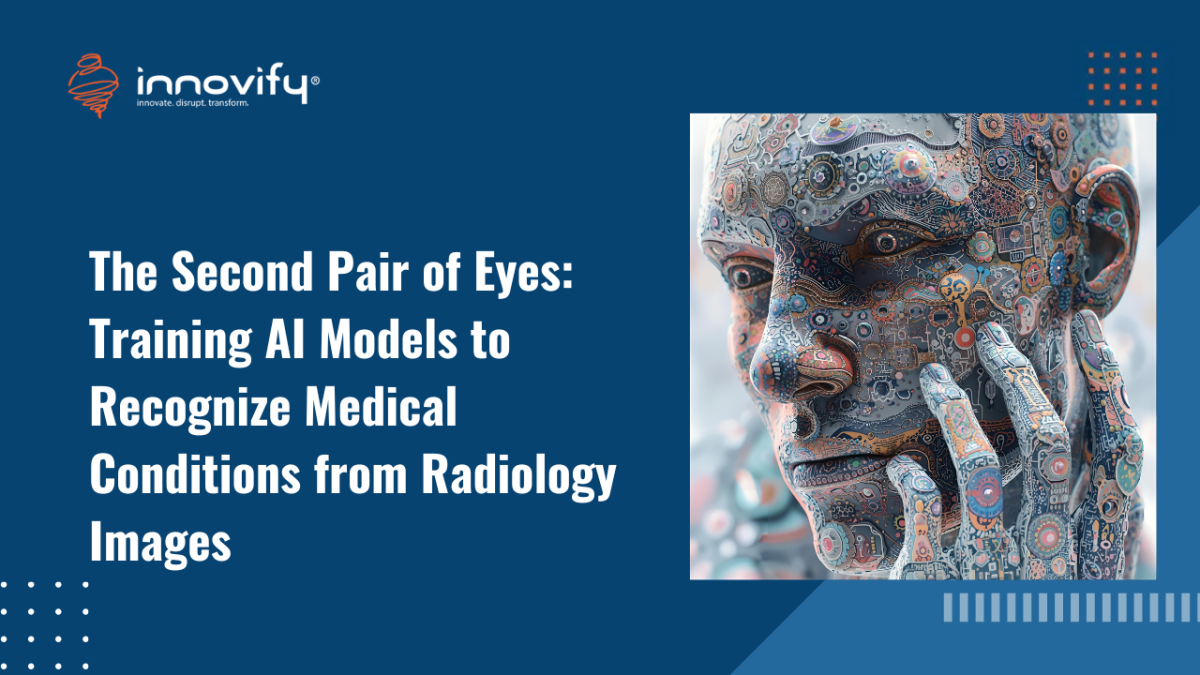AI/ML
The Second Pair of Eyes: Training AI Models to Recognize Medical Conditions from Radiology Images
Training AI models to recognize medical conditions from radiology images
Radiology is the crucial intersection of medicine and technology, where subtle visual data guides critical diagnostic and treatment decisions. Radiologists process a monumental volume of images – X-rays, CT scans, MRIs – often under intense time pressure and fatigue. The sheer volume and complexity of these images contribute to the risk of human error, potentially leading to delayed or missed diagnoses. The solution is not to replace the radiologist, but to empower them with a tireless, hyper-accurate assistant. The strategic application of Deep Learning – specifically, training AI models to recognize medical conditions from radiology images – is transforming the diagnostic workflow, providing a crucial second pair of eyes that enhances speed, consistency, and diagnostic precision.
The Data Challenge: Why Deep Learning is Necessary
Radiology images contain complex, high-dimensional data that often requires years of training for the human eye to interpret correctly. Traditional image processing techniques were inadequate for this complexity. The breakthrough came with Deep Learning, particularly Convolutional Neural Networks (CNNs), which are uniquely structured to:
- Process Image Pixels Directly: CNNs learn hierarchical patterns directly from the raw pixel data, identifying subtle visual features (edges, textures, shapes) associated with disease, such as the faint edges of a tumor or the subtle changes in lung tissue indicating pneumonia.
- Handle Massive Datasets: Training these models requires vast, well-annotated datasets of images – labeled by expert radiologists – to learn the difference between healthy and pathological states with high precision and sensitivity.
The AI Workflow: From Image to Insight
Training AI models to recognize medical conditions from radiology images involves deploying advanced computer vision tasks at scale:
1. Image Classification: Instant Triage
The AI model can quickly analyze a scan and assign it to a category (e.g., “Normal,” “Pneumonia Detected,” “Fracture Present”). This capability is revolutionary for triage. In an emergency room setting, the AI can immediately flag images with high-risk findings (e.g., a pulmonary embolism or intracranial hemorrhage), pushing them to the top of the radiologist’s queue. This dramatically reduces the time-to-diagnosis for the most critical cases.
2. Object Detection and Localization
Beyond simple classification, the AI can pinpoint the exact location and extent of an abnormality. Using techniques like bounding boxes, the model can identify and outline specific lesions, nodules, or tumors on an image. For instance, in a mammogram, the AI can detect and localize subtle calcifications or masses, ensuring the radiologist doesn’t miss a small, but critical, finding.
3. Segmentation: Precise Measurement
Semantic Segmentation allows the AI to accurately delineate the boundaries of organs, tumors, and other anatomical structures. This is crucial for:
- Volumetrics: Precisely measuring the size and volume of a tumor or lesion, which is essential for tracking disease progression and assessing treatment effectiveness.
- Anatomical Isolation: Isolating specific structures for further analysis, such as segmenting the heart ventricles to calculate ejection fraction in a cardiac MRI.
Clinical Integration and Ethical Necessity
The role of the AI model is fundamentally assistive. It acts as a powerful quality control and productivity tool for the human expert. It reduces burnout by automating the screening of normal studies and improves consistency by ensuring that no critical finding is overlooked.
However, clinical adoption mandates unwavering attention to:
- High Sensitivity and Specificity: In medicine, the cost of a false negative (missing a diagnosis) is extremely high. AI models must be trained and validated to meet stringent clinical thresholds for sensitivity (ability to detect disease) and specificity (ability to correctly identify a normal finding).
- Regulatory Approval and Validation: Before deployment, these models must undergo rigorous clinical trials and secure regulatory approval (e.g., FDA clearance) to ensure they are safe and effective.
- Explainability (XAI): The model must provide a rationale for its finding (e.g., highlighting the specific area of the image that led to the finding). This ensures the radiologist can review and validate the AI’s logic, maintaining human accountability for the final diagnosis.
The Strategic Impact
Training AI models to recognize medical conditions from radiology images is a key step in the digital transformation of healthcare. It promises to enhance the quality of care, accelerate diagnostic turnaround times, and ultimately save lives by ensuring that critical medical conditions are recognized earlier and with greater precision.
Ready to explore AI for medical imaging in your practice or enterprise? Book a call with Innovify today.




